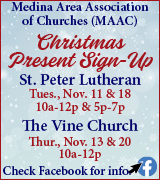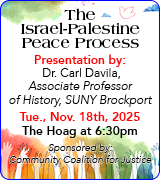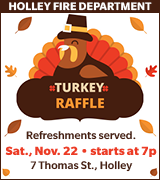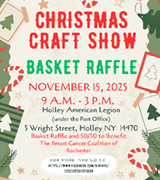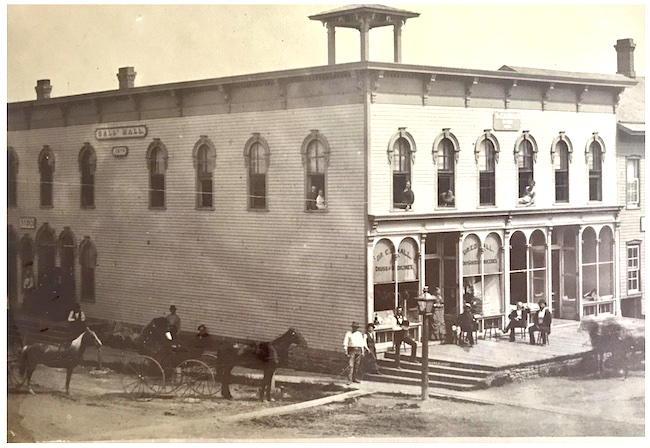Knowlesville hosted large GAR ‘camp-fire’ reunion in 1886 for vets who fought for the Union
By Catherine Cooper, Orleans County Historian
Illuminating Orleans, Vol. 3, No. 16
KNOWLESVILLE – On February 18, 1886, one of the most successful Grand Army of the Republic reunions and “camp-fires” ever organized in Western New York, was held at Hall’s Hall in Knowlesville.
Formed at the close of the Civil War, the GAR promoted fraternity, charity, and loyalty and advocated for veterans. Members attended local, state and national meetings to promote fraternity, but the “camp-fire” was by far the most popular event. It re-created symbolically, that most elemental experience of sitting around a campfire at the close of day, conversing, under a starry sky. Though these G.A.R. “camp-fires” were held indoors, they were very popular.
Hall’s Hall was filled to capacity for the occasion. The stairway was packed, “crowded to suffocation”, and many, denied admission, left in dejection. Delegates from several posts in WNY were in attendance.
A genuine camp-fire and kettle adorned the center of the stage, stacks of muskets were scattered about, and a large picture of General Grant framed in sabres surrounded a draped American flag in the rear of the stage.
The program consisted of sketches, rousing patriotic songs, and stories. Some presenters read papers on topics such as “The Old Flag” and “The Grand Army”. Several shared reminiscences of camp life. Comrade Brown read “The Raw Recruit”, a poignant composition on the experiences of a newly enlisted soldier. recruit, while Dr. Huggins of Sanborn read a paper on “Our Ladies in the War”.
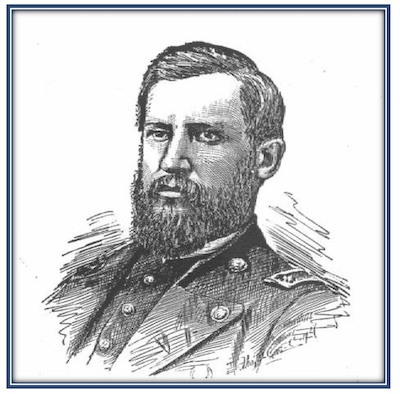
Dr. Hartwell Carver Tompkins (1828-1909) was a physician in Knowlesville.
Ample refreshments were served by the ladies and the entertainment continued through the night and “when the breaking up finally did occur, it was almost time for the reveille”.
At least two of those in attendance lived within walking distance of Hall’s Hall. Corporal John Stevens who witnessed the assassination of President Lincoln, read an account of that experience.
Dr. Hartwell C. Tompkins, one of Knowlesville’s five resident physicians, presented a paper on “Surgeon’s Instruments and Their Uses.”
He had established his medical practice in Knowlesville in 1853, at the age of 24. He was commissioned as an Assistant Surgeon with the 61st Regiment, New York Volunteer Infantry in February 1862 and was promoted to Surgeon in August of that year. He tended to the wounded at Fair Oaks and Antietam, and then at Fredericksburg, where he was compelled to perform operations under direct artillery fire.
Emotionally and physically spent, he resigned from duty, but felt compelled to return after six months. He then served as Surgeon with the 4th Regiment, New York Heavy Artillery during their engagements at the Battle of the Wilderness, Cold Harbor, Petersburg, and the Appomattox Campaign.
He mustered out with his regiment on September 26, 1865, having served for three years and one month.
In 1887, speaking at the Second Reunion of the 4th Heavy Artillery held in Rochester, he recalled the engagement at Petersburg, and said that on that day, he and an assistant had charge of ninety wounded men. He performed nine major surgeries and was at the operating table from noon until midnight. Surgeons, ordinarily, he said thought they were doing a big day’s work when they performed two or three such surgeries. He felt that he never recovered from the physical exhaustion of that day.
He was an active member of the Knowlesville community, serving as Coroner in 1876 and Postmaster in 1891. On Memorial Day, 1890, he spoke at the Knowlesville School and presented an elegant flag which was raised on the tower of the school building.
He continued his practice – in 1902, he attended to the injuries of William Trow who had fallen and suffered a broken leg. Dr. Tompkins died in 1903 at the age of 75. Following his death, his wife, Orinda, received a Civil War widow’s pension. She died in 1909, they are buried at Tanner Cemetery.


















